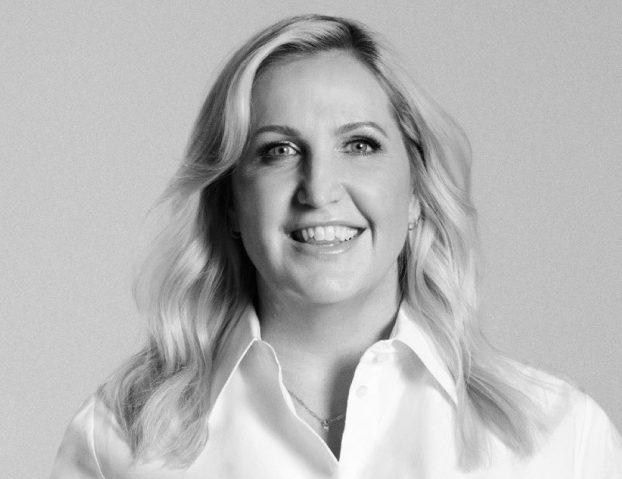Larger companies often struggle with the question of innovation and how to fit new ideas into large operations that might not be set up to handle them. But when speaking about how they’ve tried to tackle the processes that have helped them overcome those barriers, three execs have honed in on one factor that can help even the biggest company be more nimble: communication.
Jessica Weisz, chief customer officer at SoapBox, a software platform that facilitates communication of new ideas between employees and management, says innovation processes need to be attacking from two ends.
“You need one team that’s doing something different,” says Weisz, a panellist at the recent Dx3 conference in Toronto. “It might not necessarily fit in your one- or two-year strategy, but is aligned to your vision of what you want your company to be. But another team needs to be attacking the internal antibodies that kill the ability to progress. When you try to launch that new service or product, it’s hard enough to think about the actual product, but also get finance to approve and get distribution channels to line up. So you need to be thinking about both of those at the same time.”
Weisz adds that both those teams need to be “connected to the whole body” of the organization. Rick Neuman, EVP of ecommerce and technology at Walmart Canada, agrees, especially when it comes to making innovation part of a long-term vision.
Going fast or going far?
“It’s about leaning in with your partners and figuring out the difference between going fast and going far,” Neuman says. “The innovation part of the organization needs to be the quickening agent that increases the pulse of the entire organization. If you’re building an innovation strategy that is just about doing something neat, you’re missing the point.”
Communication and culture are at the core of facilitating that.
“The challenge with innovation at a corporation the size of Walmart is we are really good at operationalizing and getting [stuff] done when it’s part of our normal processes,” Neuman says. “But when you try and insert something new, it gets rejected because it’s going to disrupt the regular order of things. So when you speak with the rest of the organization, you have to keep it so simple as to how it plugs in and operates so the organism accepts and embodies it. You don’t slow down to meet the slowness in the group. You set expectations and celebrate the winners and the success stories.”
Don’t get tied up in the business case
“A lot of people get caught up in the business case when trying to do that,” adds Ewan McNeill, director of interactive customer experience at the LCBO. “But business cases are an abstraction of what you actually want to do. We’ve found it’s more fruitful to show, two or three years down the line, how it is going to affect customers. When you can relate it to how the customer interacts with us, it’s a lot easier to get it going and align it with what you’re doing as a larger organization.”
Even things that seem like the kind of red tape that would stand in the way of innovation – like legal and compliance – don’t need to be a hurdle, even at an organization like the LCBO that needs to be very aware of regulatory factors.
“I see legal and compliance as a part of the regular process, because it’s known,” McNeill says. “They are also partners in the organization, so if you bring them in the loop early on and communicate what you’re trying to do, you’ll find they feel it’s going to thrust the organization forward as much as you do.”
Change to work with startups, not the other way around
Many organizations have turned to the startup community to help foster innovation, but Weisz says it’s important for organizations to not throw their weight around and let their own processes “corrupt” the startup’s product or working process. To that end, Neuman says it might take a change within the organization if they really want to get the most out of working with startups.
“We redesigned our non-disclosure agreements and our contracting process to allow for quicker and less painful entry points for startups to work with us,” he says. “Startups work a lot faster than we are used to, and one of the pain points we were finding was that the approval process took months of time, and that kind of thing is not going to work if we’re going to move at the speed we need to in order to make these relationships to pay off.”
Conquering the budget hurdle
One of the biggest hurdles to innovation, especially in Canada, is budgets and being able to justify the larger organization taking a risk on using its funds on a new initiative that may not pay off.
“The whole process is broken,” Weisz says. “You can’t plan 18 months in advance where you are going to need to spend your money. It needs to be chunked out quarter by quarter.”
But pending a large-scale change of the entire budget process, Neuman suggested working closely with the finance team, setting aside a small chunk to be put towards innovations and new projects, and using the long-term value addition to the customer to justify getting that chunk, as opposed to a short-term business or sales case. He added that as a retailer known for “everyday low prices,” a lot of cost savings at Walmart ends up being put back into keeping those prices low, but he says rewarding the innovation group for helping that goal can go a long way to funding further innovations.
“I tell my team that I’m going to take 50% of any savings you bring back to me and put it back into innovation, because one innovation is going to drive the next innovation after that,” he says. “It still means you have to, philosophically, take a chunk of those saving and put it into price so we are living our message, but if my team knows it’s going to have a payoff for them as well and get rewarded for living our values, it makes their work feel much more valuable.”
























